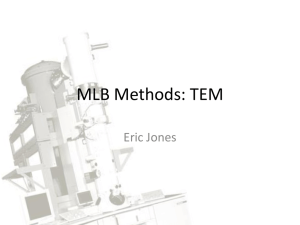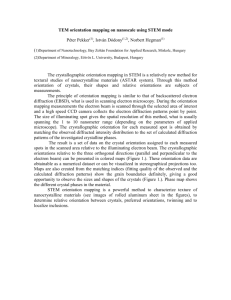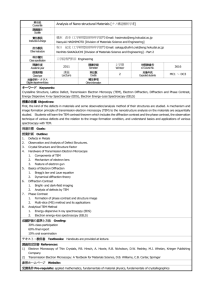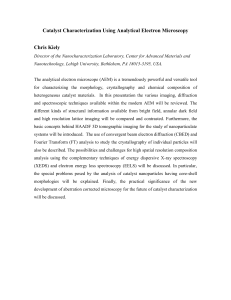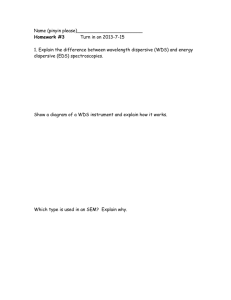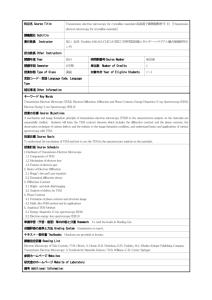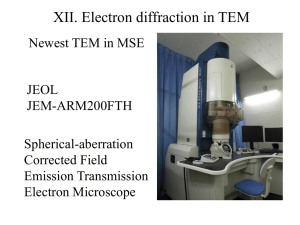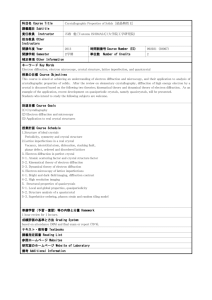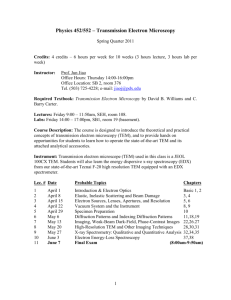TEM ppt presentation Vidhya Sagar Jayaseelan
advertisement
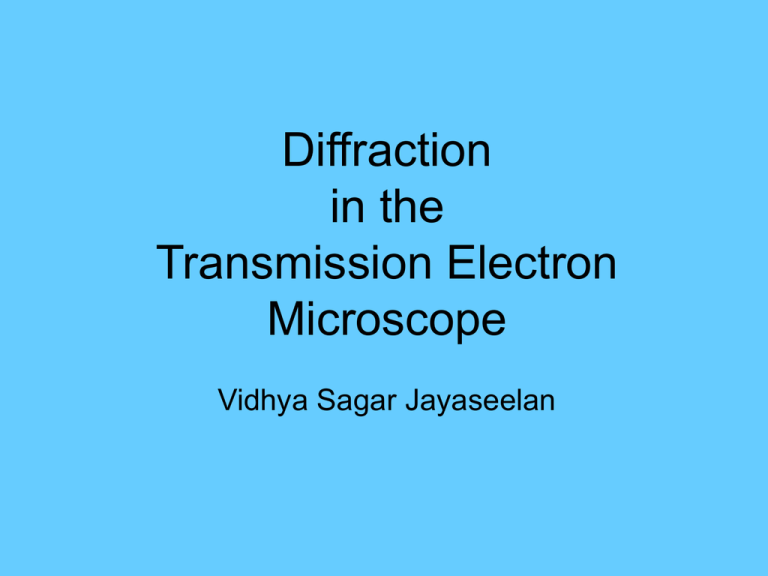
Diffraction
in the
Transmission Electron
Microscope
Vidhya Sagar Jayaseelan
TEM- What is it?
Advantages of TEM
1. High Resolution images 1,000,000 X
2. Sub-micron level diffraction
3. Defect imaging – dislocations, twins, stacking
faults, point defects, antiphase boundaries
4. Simultaneous imaging, structural and
compositional analysis
5. Orientation studies possible
6. Identifying the phases and crystal structures
7. Site occupancy of atoms/ions
Disadvantages of TEM
1.
2.
3.
4.
5.
Sample size
Preparation
Instrument issues
Operation
Interpretation
Wavelength of electrons
Wavelength – magnification
q*U = ½ mv2,
λ = h/ (m * v )
where:
λ = wavelength
h = Planck's constant (6.6 X 10-27)
m = mass of the electron (9.1 X 10-28)
v = velocity of the electron
U = Potential drop
λ = (1.23 nm)/ U1/2
Electron Sample Interaction
Incident electron beam
Backscattered electrons-Elastic
Inelastic- Secondary electrons
Auger Electrons
Elastic scattering-Diffraction
2θ
Characteristic X rays
Inelastic scattering
Transmitted beam
Optics of the TEM
•Gun
•Lenses
Focal length
•Apertures
•Screen
Image Contrast in TEM
• Thickness
• Composition
– Atomic number/phases
• Diffraction (orientation)
• Strain fields
• Fringe Effects
Diffraction in TEM
Reciprocal lattice –What is it?
Equations- Bragg, Laue, Fourier Transform
Real
Reciprocal
Ewald Sphere
Zone axis for SC
<100>
<100>
<110>
<111>
Real to Reciprocal lattice equations
The relationship
– Bragg’s law
nλ = 2d sinθ
– Laue equation
r = (S-S0) / λ
– Fourier Transform
F(s) = ∫ dx f(x) exp(–i2πsx)
Structure factor
Fhkl = ∑ fn exp { 2πi (hx1 +ky1+ lz1)}
Single vs Polycrystal
Electron vs XRay Diffraction
2θ
TEM DiffractionWhat can we infer?
•
•
•
•
Phases and crystal structure types
Crystal symmetry and space group
Orientation relationships between phases
Determining growth directions, interface
coherency
• Identifying defects , i.e. twinning, SFs,
Dislocations
• Ordering behavior of crystal structures and
the site occupancy preferences
Dark field imaging
Dark field imaging
Kikuchi lines
θ
Inelastic scattering
without significant
wavelength change
leads to formation
of Kikuchi lines by
diffraction.
Incoming beam has
every possible
direction. Outgoing
strong beam is at
Bragg angle. This is
particularly seen in
thick samples
Kikuchi Maps
More….
• Transmission Electron Microscopy- Dr. Vasudevan’s
Graduate Course
• Transmission Electron Microscopy – David B. Williams
and C. Barry Carter
• Transmission Electron Microscopy – Ludwig Reimer
• WWW

